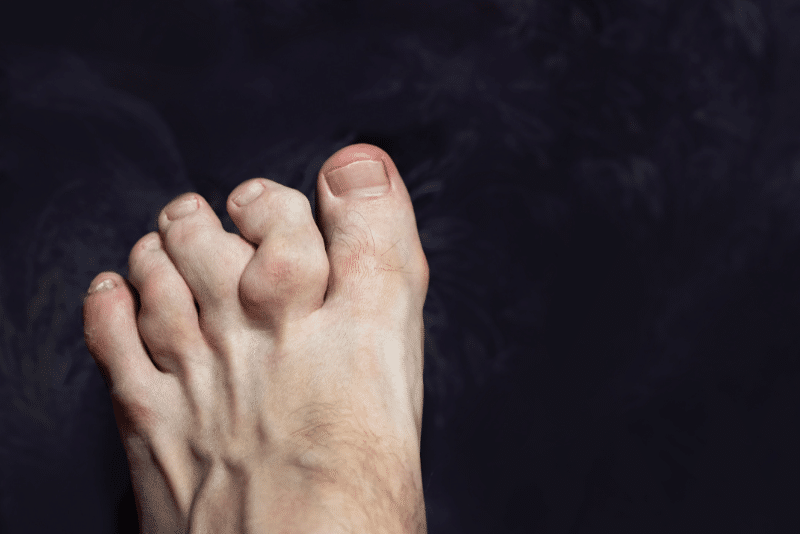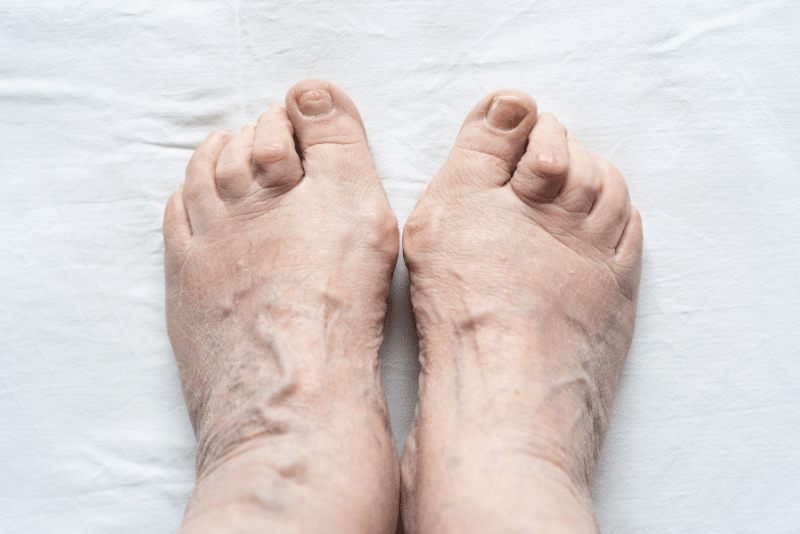Hammertoe Specialist in Illinois
Struggling with foot or ankle pain from hammertoe? The expert team at Suburban Orthopaedics is here to help. Our orthopedic specialists are dedicated to relieving your discomfort and enhancing your quality of life.
Board-Certified Orthopedic Foot Surgeon for Hammertoes in Bartlett, Elgin, Schaumburg, and Chicago, IL

Deformities of the toes, such as hammertoes and hallux valgus, also known as bunions, can cause discomfort, limit mobility, and affect how you walk. These conditions often develop gradually and can worsen over time if left untreated. Early evaluation and customized orthopedic care are key to relieving symptoms and preventing further joint damage or deformity.
What Are Hammertoes?
A hammertoe is a bending deformity that affects the middle joint of one or more toes, most often the second, third, or fourth toe. It causes the toe to bend downward in a way that resembles a hammer. This abnormal position can cause pain, swelling, corns, and calluses, making it difficult to wear shoes. Hammertoes may be flexible in the early stages but often become rigid and more painful as the condition progresses.
What Causes Hammertoes?
Hammertoes are typically caused by an imbalance in the muscles, tendons, or ligaments that hold the toe straight. Over time, this imbalance causes the joint to bend. Wearing tight, narrow shoes or high heels can crowd the toes and contribute to the development of hammertoes. Other contributing factors may include trauma to the toe, arthritis, high arches in the feet, or a second toe that is longer than the big toe. Some people may also be genetically predisposed to developing hammertoes based on the shape and structure of their feet.
What Is Hallux Valgus?
Hallux valgus is the medical term for a bunion, a bony bump that forms at the base of the big toe. It occurs when the big toe drifts toward the second toe, causing the joint at the base of the toe to protrude outward. Over time, this misalignment can lead to chronic pain, joint swelling, and difficulty wearing shoes. In some cases, it can also affect the second toe, causing it to overlap with the others.
What Causes Bunions?
Bunions are often caused by structural foot problems that lead to instability in the big toe joint. These issues can be inherited or developed due to abnormal walking patterns. Wearing too tight shoes, especially those with pointed toes or high heels, can increase pressure on the toe joint and speed up the progression of hallux valgus. Flat feet, low arches, and joint laxity are also contributing factors. Inflammatory conditions, such as arthritis, may accelerate the development of bunions in some individuals.
Can I Treat Hammertoes and Hallux Valgus at Home?
In the early stages, conservative measures can help relieve symptoms and slow the progression of toe deformities. Changing your footwear to shoes with a broader toe box, avoiding high heels, and using orthotic inserts improve comfort and reduce pressure on the affected joints. Stretching exercises and padding can also help relieve irritation caused by hammertoes and bunions. However, while these approaches may ease discomfort, they do not correct the underlying deformity. Medical evaluation is necessary to determine the most effective treatment for your condition.
Should I See an Orthopedist for Hammertoes or Bunions?

If you are experiencing persistent foot pain, visible toe deformities, or difficulty finding comfortable shoes, it’s time to consult with an orthopedic specialist. A thorough evaluation can help determine the severity of your condition and identify the right course of action. Whether your treatment plan includes custom orthotics, physical therapy, or surgical options, early intervention provides the best chance for long-term relief and restored mobility.
Don’t let hammertoes or bunions interfere with your daily life. Schedule a consultation and explore your options for personalized foot and ankle care.
Request an Appointment